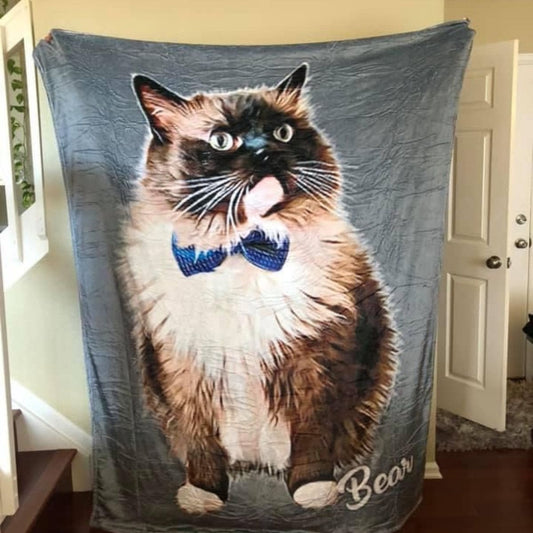Administering medication to your cat can be a challenging task, but with the right knowledge and preparation, it can be done safely and effectively. Understanding how to prepare for the process, administer different types of medication, and what to do afterward is crucial for your cat's health and well-being. This guide will provide you with step-by-step instructions on how to safely administer medication to your feline friend.
Key Takeaways
- Create a calm and safe environment for administering medication to your cat, and be prepared with all necessary items within reach.
- Read and understand the medication's label and dosing instructions carefully before administering it to ensure proper dosage.
- Use appropriate techniques for pill and liquid medication administration, considering your cat's comfort and safety.
- Monitor your cat's reaction after administering medication and ensure they ingest the full dose without spitting it out.
- Seek veterinary assistance if your cat refuses medication or if you encounter any difficulties during the process.
Preparing to Administer Medication

Creating a Safe Environment
Before administering medication, it's crucial to create a stress-free environment for your cat. Start by choosing a quiet room where your cat feels comfortable and secure. Remove any potential distractions or hazards that could cause stress or injury during the process.
- Ensure all necessary items are within reach before you begin. This includes the medication, treats, and any tools like pill poppers or syringes.
- Consider your cat's temperament. Some cats may be calmer when wrapped in a towel or blanket, which can also prevent scratching.
- Familiarize yourself with the medication's dosing instructions ahead of time to avoid any confusion during administration.
Creating a safe and calm environment is not only beneficial for your cat's well-being but also makes the medication process smoother for both of you.
Understanding the Medication and Dosing
Before administering medication to your cat, it is crucial to understand the type of medication and the exact dosing prescribed by your veterinarian. Medications come in different forms such as pills, capsules, or liquids, and using the incorrect form can lead to ineffective treatment or even harm your cat.
Accurate dosing is paramount for the health and safety of your pet. Your veterinarian will provide guidelines on the dosage and frequency of administration. Adhering to these instructions is imperative to avoid under-treatment or over-treatment.
- Ensure you have the correct form of medication.
- Follow the prescribed dosage and frequency.
- Use tools like syringes for liquid medications to measure exact dosages.
Administering liquid medication requires precision. Gently insert the syringe into the side of your cat's mouth, aiming toward the back, and slowly depress the plunger.
Always double-check the medication label and dosing instructions before proceeding. If you are uncertain about any aspect of the medication or dosing, consult your veterinarian for clarification.
Assisting and Restraining Your Cat
When preparing to administer medication, creating a calm atmosphere is crucial for both you and your cat. Start by placing a towel or blanket on a flat surface to provide a non-slip area for your cat to rest on. This will help prevent any slipping and make your cat feel more secure.
Position your cat against your chest or in your lap to ensure they are secure but not overly restrained. Use one hand to gently hold your cat's head, with your thumb and index finger on either side of the jaw. Carefully open the cat's mouth by tilting the head upward and using the same hand to open the lower jaw.
If you're administering medication alone, consider wrapping your cat in a blanket, leaving only the head exposed. This can help prevent scratches and bites. However, if your cat is particularly resistant, don't hesitate to ask for assistance. Having another person help can make the process smoother and safer for everyone involved.
- Watch your cat's body language closely.
- Ask for help if needed.
- Ensure you understand the dosing instructions before beginning.
Administering Pills to Your Cat

Getting the Pill Ready
Before administering a pill to your cat, it's essential to have all the necessary supplies on hand. This includes the medication prescribed by your veterinarian, a pill gun or pill popper, and a treat to reward your cat afterward. Read the medication's label carefully to understand the dosing instructions.
Prepare the pill by using a pill dispenser or a pill pocket to conceal it, ensuring a smoother administration process. If the pill needs to be altered, use a pill crusher or splitter for the appropriate size.
When the pill is ready, choose a calm moment and a safe place for the administration. If you're handling the cat alone, consider wrapping the cat in a blanket with only the head exposed for better control. Remember, some pills can be disguised in food, but always verify that the medication is safe to give with food.
Positioning Your Cat for Pill Administration
Once you have the pill prepared, it's crucial to position your cat in a way that will make the administration process as smooth as possible. Ensure your cat is calm and comfortable before you begin. You can place your cat on your lap or on a stable, flat surface. If your cat is prone to squirming, you might consider wrapping them in a towel or blanket, leaving only the head exposed to help prevent scratching and movement.
- Gently hold your cat's head by making a sideways C-shape with your non-dominant hand.
- Place your thumb and fingers on opposite sides of your cat's jaw.
- Tilt the head back gently so the nose points upward, which will encourage your cat's mouth to open.
It's important to be patient and gentle during this process to avoid causing stress to your cat or yourself.
Remember, the goal is to create a positive experience for your cat, so take your time and provide reassurance throughout the procedure.
Techniques for Pill Swallowing
Administering a pill to a cat requires patience and technique. Place the pill in your dominant hand, and use your index finger to guide it toward the back one-third of the cat's tongue to trigger an automatic swallowing reflex. For those less comfortable with using their fingers, a pill popper can be a helpful tool, ensuring the pill reaches as far back on the tongue as possible.
After positioning the pill, gently close your cat's mouth and return their head to a neutral position. It's crucial to confirm that your cat has swallowed the medication. A common sign of ingestion is when a cat licks its nose. However, be vigilant as cats can be crafty in attempting to spit out the pill.
To encourage swallowing, you can rub your cat's throat or blow on their nose. Experiment with different positions to find what's most comfortable for your cat, whether it's on the floor, in your lap, or on a raised surface.
Remember to reward and praise your cat after the pill is successfully swallowed to create a positive association with the process.
Giving Liquid Medication to Your Cat

Preparing the Liquid Medication
Before administering liquid medication to your cat, it's crucial to prepare it correctly to ensure proper dosage and ease of administration. Measure the exact amount of medication as prescribed by your veterinarian, using the syringe or dropper that is often provided with the medication.
- Check the medication label for any specific storage instructions or shaking requirements before use.
- If the medication needs to be diluted or mixed, follow the veterinarian's instructions precisely.
- Warm the medication slightly by holding the container in your hands, as some cats prefer liquids that are not cold.
It's important to be gentle and patient during this process, as cats can sense anxiety, which may make them less cooperative.
Remember to always wash your hands before and after preparing the medication to maintain hygiene and prevent any contamination.
Direct Oral Administration
Administering liquid medication directly into your cat's mouth requires a careful and gentle approach. Use a syringe to measure the exact dosage your veterinarian prescribed. When ready, gently insert the syringe into the side of your cat's mouth, slightly towards the back, and slowly depress the plunger. This method ensures a controlled delivery, reducing the risk of discomfort or choking.
It's important to be patient during this process, as rushing can cause your cat to become stressed or aspirate the medication.
Remember that some medications may have an unpleasant taste, which could make direct oral administration more challenging. If your cat is resistant, consider the following steps:
- Position your cat in a comfortable and secure hold.
- Introduce the syringe gently to avoid startling your cat.
- Administer the medication steadily and praise your cat afterwards.
For medications like buprenorphine, the transmucosal route is often used, where the medication is absorbed through the mucus membranes. This is a noninvasive option that can be easier for both you and your cat.
Mixing Medication with Food
When administering medication to your cat, mixing the crushed pill with food can be an effective strategy for those with a discerning palate. Ensure the medication is thoroughly mixed with a small portion of your cat's regular meal and observe that your cat consumes the entire portion to receive the full dosage.
It's crucial to verify with your veterinarian whether the medication can be safely crushed and if it should be taken with food or on an empty stomach for proper absorption.
Some medications may have an unpleasant taste that could deter your cat from eating the mixed food. In such cases, consider alternative methods or consult your vet for a more palatable form of the medication.
Remember to always follow your vet's instructions regarding food and medication timing:
- Administer with a meal to reduce stomach upset
- Give on an empty stomach for optimal absorption
- Confirm if a small amount of nutrient-dense liquid is permissible with the medication
Monitoring After Medication Administration

Observing Your Cat's Reaction
After administering medication, it's crucial to closely observe your cat's behavior and physical reactions. This monitoring phase is essential to ensure the safety and efficacy of the treatment. Look for signs of discomfort, allergic reactions, or any unusual behavior that deviates from their normal routine.
- Monitor your cat's appetite and energy levels.
- Keep an eye out for any signs of gastrointestinal upset, such as vomiting or diarrhea.
- Watch for any changes in urination or defecation habits.
It is important to remember that cats are adept at masking discomfort and illness. Subtle changes in behavior may be the only indicators that something is amiss.
If you notice any adverse reactions or if your cat's demeanor changes significantly, do not hesitate to contact your veterinarian. Timely intervention can prevent complications and ensure the well-being of your feline friend.
Ensuring Complete Ingestion
After administering medication, it's crucial to ensure that your cat has fully ingested the dose. Watch for the tell-tale sign of a licked nose, which often indicates successful swallowing. However, cats can be adept at pretending to swallow only to spit out the medication later. Remain vigilant for a few minutes post-administration to confirm that the pill isn't discarded.
To promote complete ingestion, consider hiding the pill in a treat. Encase the medication within two halves of a tasty treat, creating a 'medication sandwich' that your cat will be more likely to consume entirely.
Here are steps to confirm your cat has taken their medication:
- Observe your cat's behavior immediately after giving the medication.
- Look for the nose-licking behavior as a positive sign.
- Stay with your cat for a short period to ensure they do not spit out the medication.
- If using treats, check that none of the medication has been left uneaten.
Rewarding your cat with praise or a small treat after successful medication can reinforce positive associations, making future administrations smoother.
Storing Medication Properly
After ensuring your cat has taken their medication, it's crucial to store any remaining doses correctly to maintain their efficacy and prevent accidental ingestion. Always check the medication's label for specific storage instructions, as some may require refrigeration while others should be kept at room temperature.
- Keep medications in their original containers, clearly labeled with the cat's name, medication name, and dosing instructions.
- Place medications out of reach of pets and children, ideally in a locked cabinet or a dedicated medication box.
By establishing a routine for medication storage, you not only safeguard the medication but also create a safe environment for everyone in the household.
Remember to dispose of expired or unused medications properly. Consult your veterinarian or a local pharmacy for guidance on safe disposal methods to prevent environmental contamination or accidental exposure.
Troubleshooting and Seeking Veterinary Assistance

When Your Cat Refuses Medication
When faced with a cat that staunchly refuses medication, it's essential to explore alternative methods. Some medications come in liquid form, which might be more easily accepted by your feline friend. If the taste is an issue, ask your veterinarian about compounding the medication into a flavored liquid.
- Contact your veterinarian for alternative medication forms such as injections or transdermal preparations.
- Consider the use of pill pockets or hiding the pill in a favorite treat.
- Employ patience and gentle reassurance to reduce stress for both you and your cat.
Remember, the goal is to ensure your cat receives the necessary treatment without undue stress. If you encounter persistent difficulties, professional advice is crucial.
Always monitor your cat's reaction after attempting a new method and be prepared to seek veterinary assistance if you cannot administer the medication safely.
Alternative Medication Forms
When traditional pill or liquid medication methods meet resistance from your feline friend, exploring alternative medication forms can be a game-changer. Veterinary compounding offers a tailored solution, transforming the medication into a more acceptable form for your cat. Flavored chews or liquids can entice even the most reluctant cats, making medication time less stressful for both of you.
Options such as ear flap medications, which are absorbed transdermally, provide a non-invasive route that bypasses the need for oral administration. Establishing a routine with these alternative forms can further ease the process, as cats are creatures of habit.
It's essential to consult with your veterinarian to determine the most suitable medication form for your cat's specific needs and preferences. They can guide you through the available options and ensure that your cat receives the appropriate care.
Contacting Your Veterinarian for Help
When you've tried all the techniques and your cat still refuses to take their medication, it's time to consult your vet. They are equipped to offer alternative solutions that may be more palatable or less stressful for your feline friend. Remember, never force your cat to move in a way that causes distress, as this can lead to a negative association with medication and potentially harm your relationship with your pet.
It's crucial to monitor your cat's behavior for signs of pain or distress after administering medication. Subtle changes in behavior can indicate discomfort or an adverse reaction to the medication.
If your cat is in pain, your vet might suggest the use of heating pads for pain relief, which can be a comforting addition to medical treatment. For more serious conditions requiring injections or other complex treatments, always ensure they are administered promptly by a veterinarian. Your vet's guidance is invaluable in these situations, and they can provide the necessary support to both you and your cat.
Conclusion
Administering medication to your cat can be a challenging task, but with patience and proper technique, it can be done safely and effectively. Always prepare the environment and understand the dosing instructions before you begin. Whether you're giving a pill or liquid medication, make sure to do so gently and with care for your cat's comfort. If you encounter difficulties, don't hesitate to contact your veterinarian for advice or alternative options. Remember, the goal is to ensure your cat receives the necessary treatment with as little stress as possible for both of you.
Frequently Asked Questions
How do I prepare the environment for giving medication to my cat?
Prepare a safe space to handle your cat, with the medication easily accessible. If alone, place your cat in your lap or have someone help by wrapping the cat in a blanket, leaving only the head exposed. Always read and understand the dosing instructions beforehand.
What should I do if my cat refuses to take the pill?
If your cat refuses to take the pill, contact your veterinarian for alternative medication forms such as liquid medication or injections.
How can I give liquid medication to my cat if it doesn't like it?
Try mixing the liquid medication with a small amount of canned food to ensure ingestion. If dietary restrictions apply or the cat refuses, administer the medication directly into the mouth.
Is it okay to re-medicate my cat if it spits out some of the medication?
Do not re-medicate unless you are certain none of the medication was ingested. Most cats will spit out some medication, so it's important to administer it slowly and watch for signs of swallowing.
How should I administer liquid medication directly to my cat?
Draw the prescribed amount of liquid into a syringe, place it just past the tooth line in your cat's mouth, and slowly dispense it to allow time for swallowing. Warm the medication to room temperature to make it more palatable.
What is the proper way to store cat medication after administering it?
Rinse the syringe with water after use and refrigerate the medication if necessary. Always follow the storage instructions on the medication label to ensure its efficacy.




